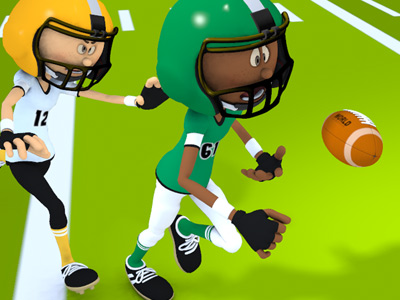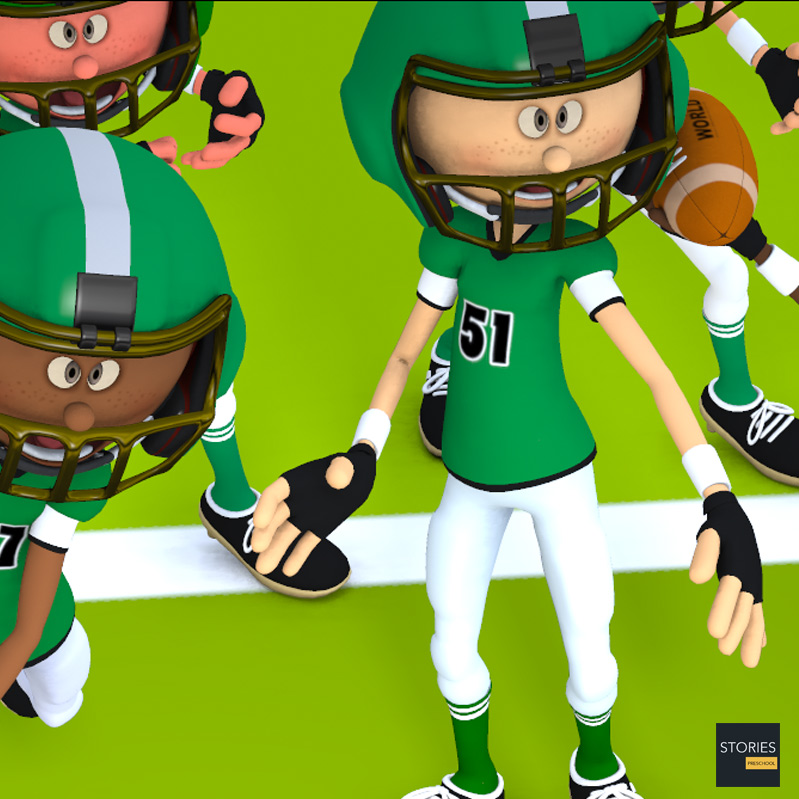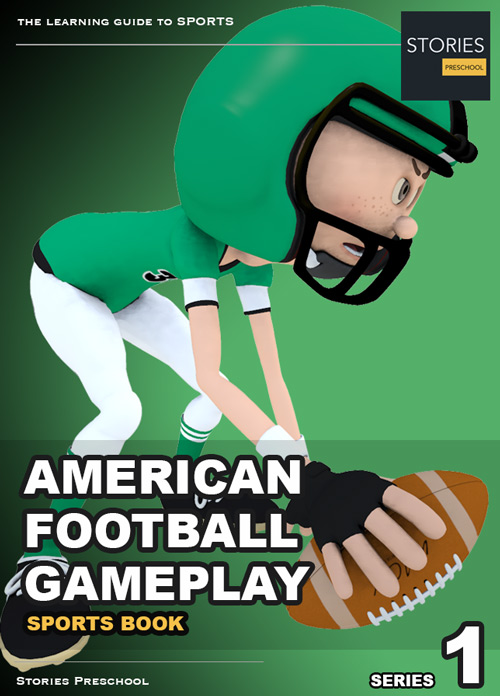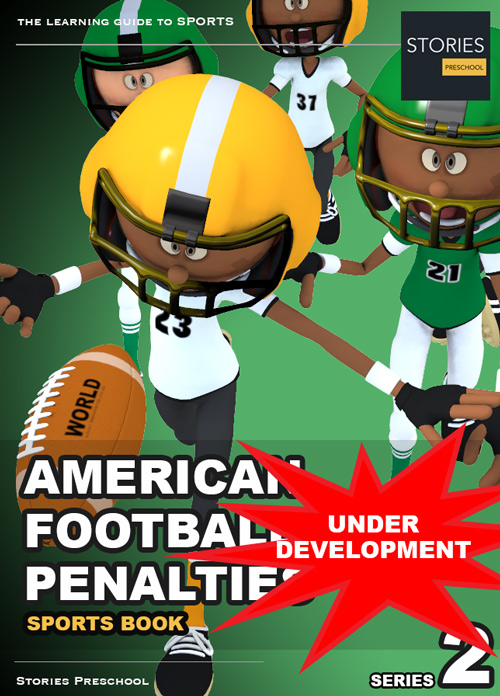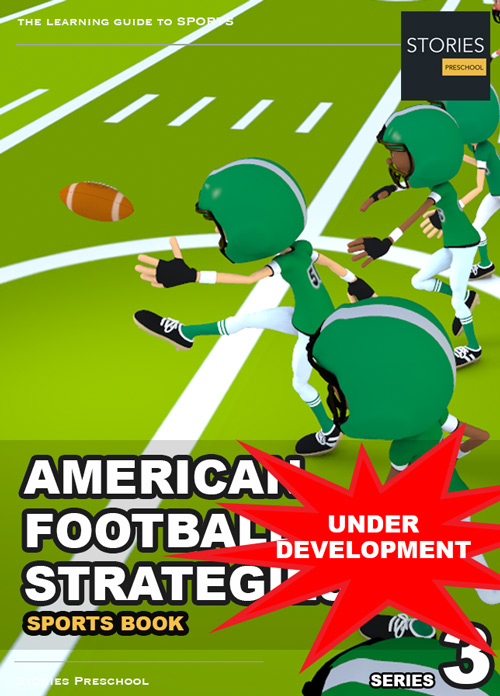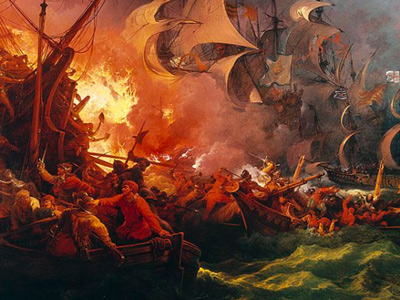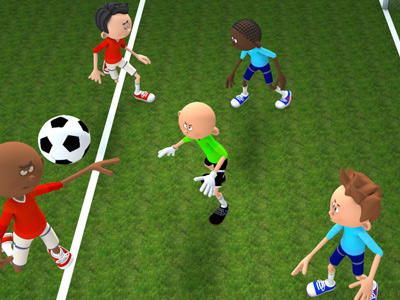
American football
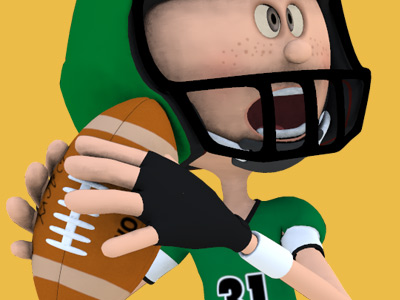
Field
Football games are played on a rectangular field that measures 120 yards (110 m) long and 53.33 yards (48.76 m) wide.
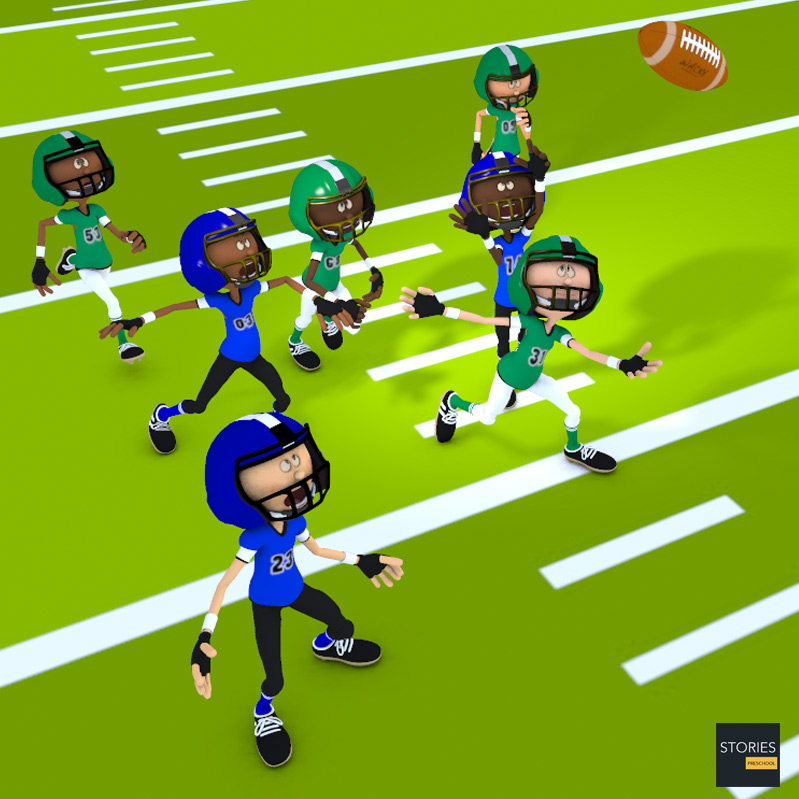
Lines marked along the ends and sides of the field are known respectively as the end lines and side lines, and goal lines are marked 10 yards (9.1 m) inward from each end line. Weighted pylons are placed on the inside corner of the intersections of the goal lines and end lines.
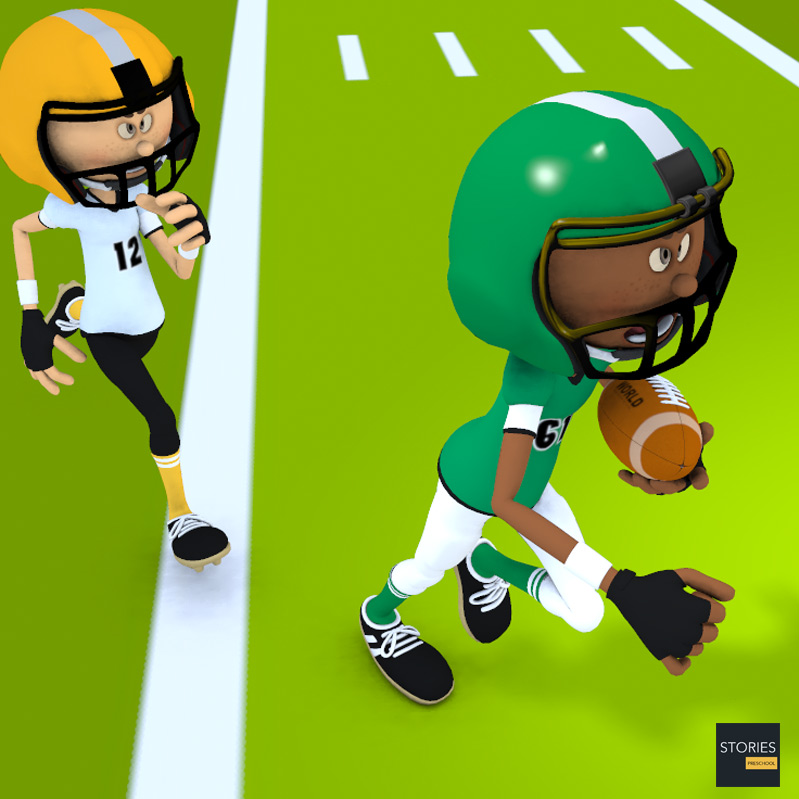
White markings on the field identify the distance from the end zone. Inbound lines, or hash marks, are short parallel lines that mark off 1 yard (0.91 m) increments. Yard lines, which run the width of the field, are marked every 5 yards (4.6 m). A one yard wide is placed at each end of the field; this line is marked at the center of the two-yard line in professional play and at the three-yard line in college play. Numerals that display the distance from the closest goal line in multiples of ten are placed on both sides of the field every ten yards.
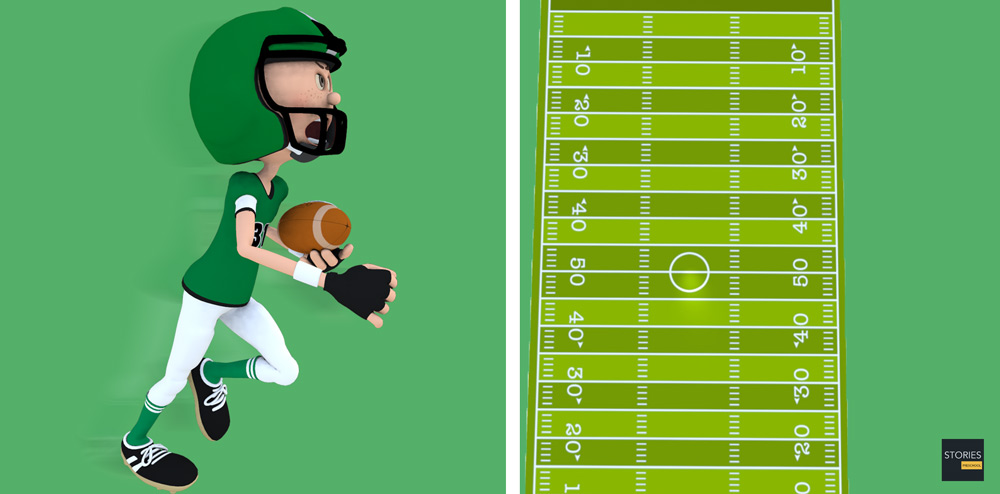
Goalposts are located at the center of the plane of each of the two end lines. The crossbar of these posts is ten feet (3 meters) above the ground, with vertical uprights at the end of the crossbar 18 feet 6 inches (6 m) apart for professional and collegiate play and 23 feet 4 inches (7 m) apart for high school play.
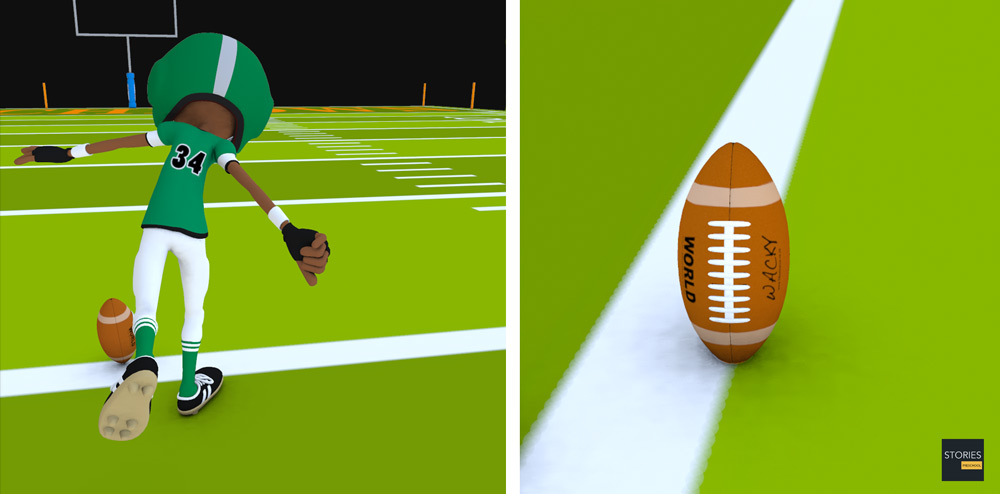
The uprights extend vertically 35 feet on professional fields, a minimum of 10 yards on college fields, and a minimum of ten feet on high school fields. Goal posts are padded at the base, and orange ribbons are normally placed at the tip of each upright.
Goal Line
The goal line is the chalked or painted line dividing the end zone from the field of play in American football and Canadian football. It is the line that must be crossed in order to score a touchdown.
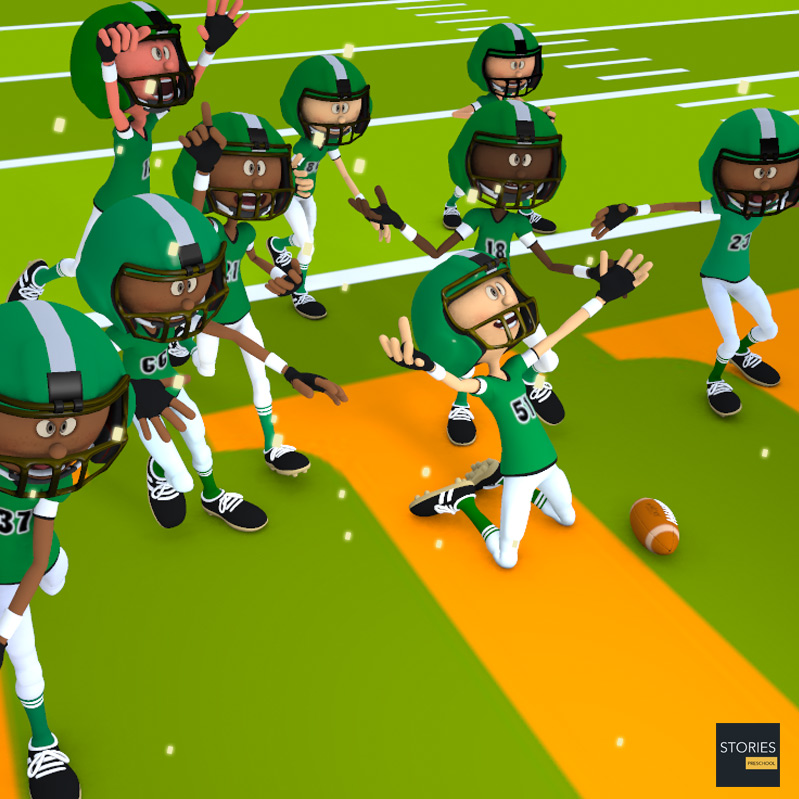
If any part of the ball reaches any part of the imaginary vertical plane transected by this line while in-bounds and in possession of a player whose team is striving toward that end of the field, this is considered a touchdown and scores six points for the team whose player has advanced the ball to, or recovered the ball in, this position.
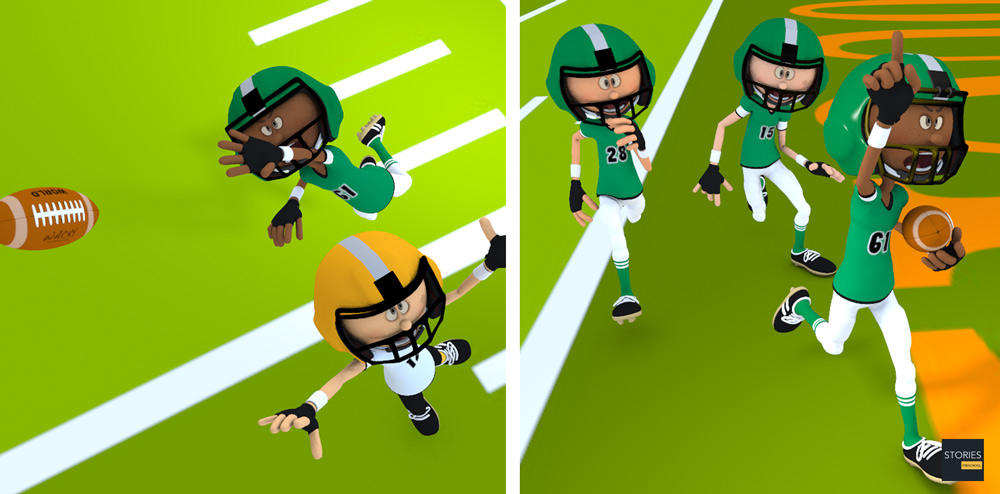
This is in contrast with other sports like Association football and ice hockey, which require the puck or ball to pass completely over the goal line to count as a score.
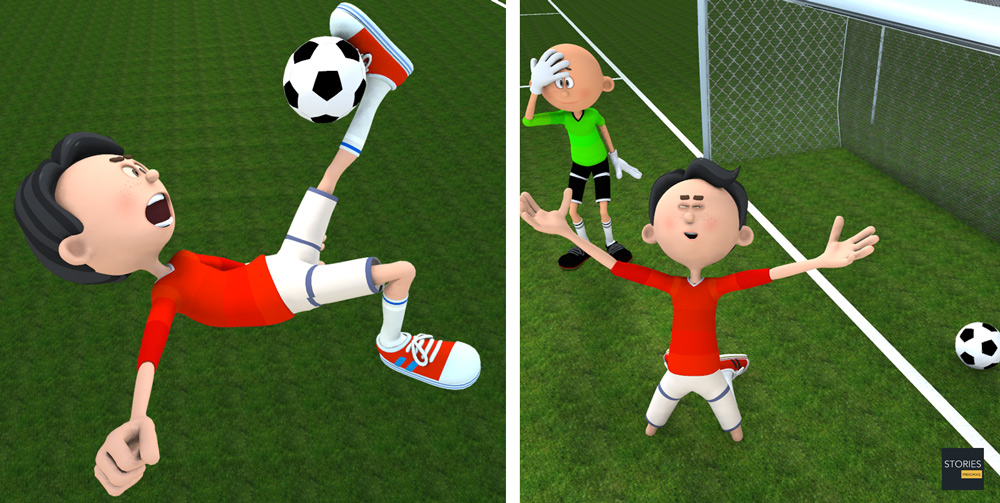
If any member of the offensive team is downed while in possession of the ball behind his own team's goal line, this is called a safety and scores two points for the defensive team.
If, during the course of play, a loose ball travels past the goal line and is recovered within the end zone, then it is a touchdown if recovered by the kicking team, or a touchback if recovered and downed by the receiving team.
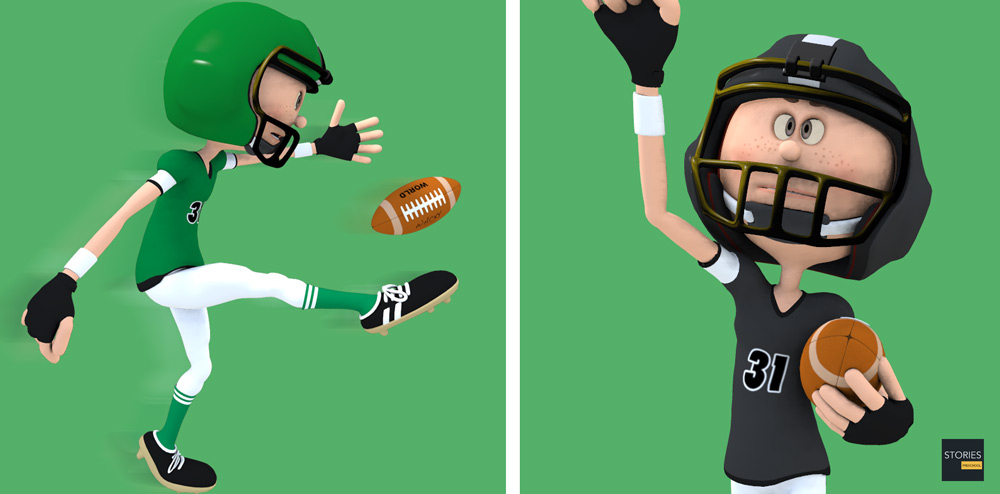
In the event of a kick recovered in one's own end zone, the entirety of the ball must pass the goal line in order for the ball to be considered in the field of play, and not a touchback.
Line of Scrimmage
In American and Canadian football, a line of scrimmage is an imaginary transverse line (across the width of the football field) beyond which a team cannot cross until the next play has begun. Its location is based on the spot where the ball is placed after the end of the most recent play and following the assessment of any penalty yards.
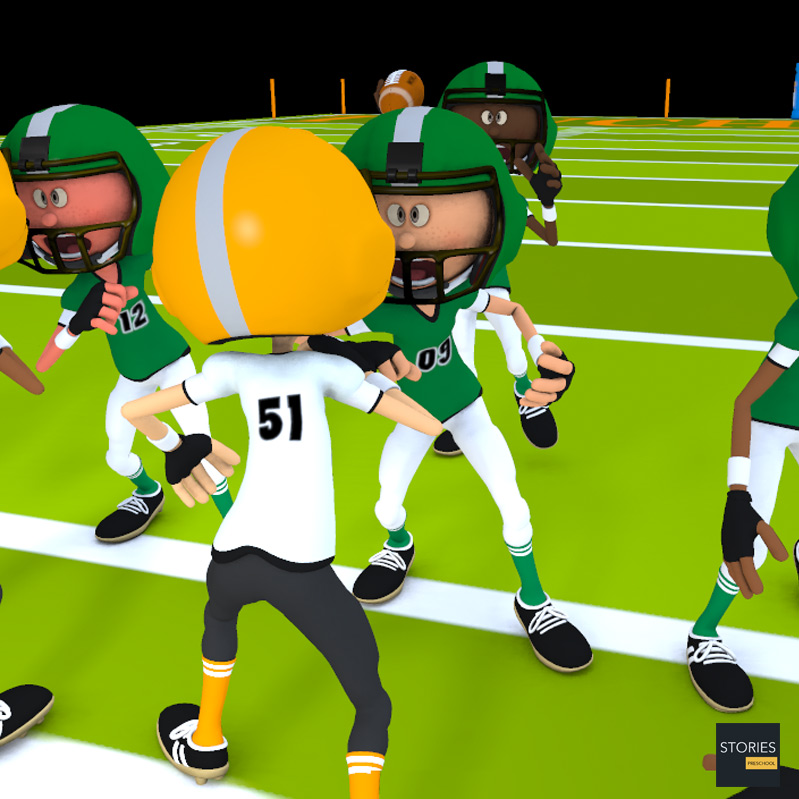
Sidelines
The "sidelines" are the white or colored lines which mark the outer boundaries of a sports field, running parallel to each other and perpendicular to the goal lines. The sidelines are also where the coaching staff and players out of play operate during a game. The area outside the sidelines is said to be out of bounds. The term is predominantly in use in American football, Canadian football, field lacrosse and basketball.
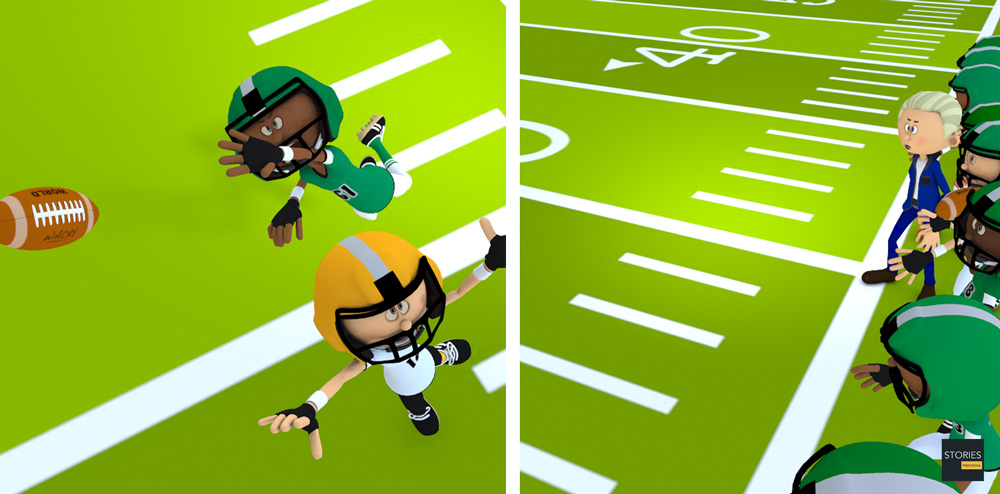
In rugby union, rugby league and association football, they are known as touch-lines. The foul line is a similar concept in baseball. Sports in which the playing surface is bounded by walls, such as ice hockey, box lacrosse, and indoor football, do not use sidelines; in these sports, coaches and reserve players are positioned in recessed benches behind the walls.
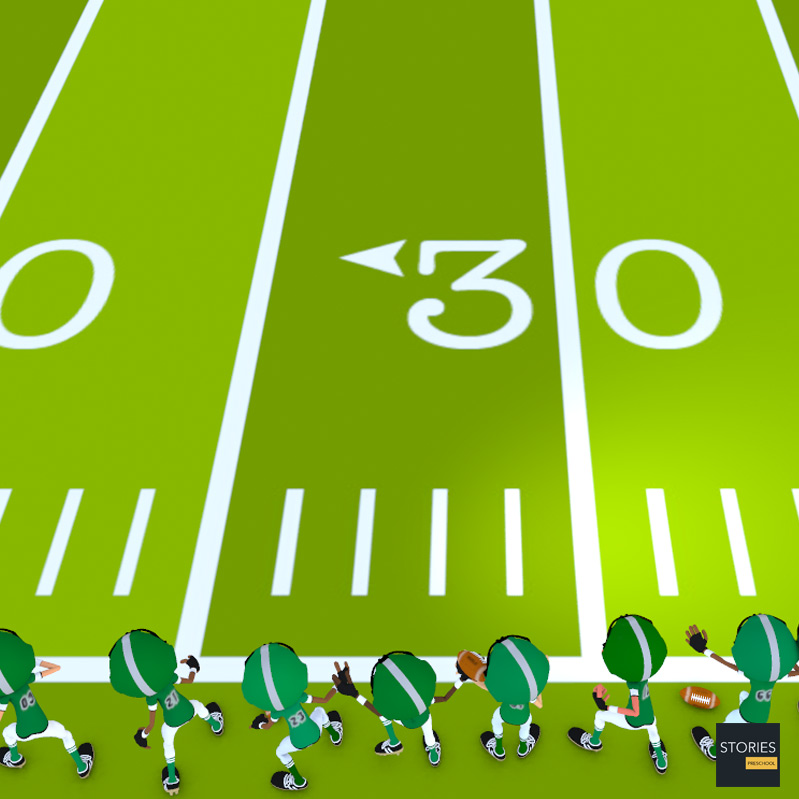
The sideline can be used metaphorically to refer to players who have been "benched," meaning that they have been taken out of the game purposefully by the coaching staff due to poor performance in the game or previous play. Establishing shots of these players may be used by televised sports programs to indicate potential roster switches, or to build a narrative of the failure or success of the coaching staff's decision. Likewise, images of the sideline may suggest that the highlighted player had done something of interest outside of the confines of play. For example, in American football, dousing the head coach with water or sports drink is a popular way of celebrating crucial victories, established as a tradition by the New York Giants of the National Football League in the mid-1980s.
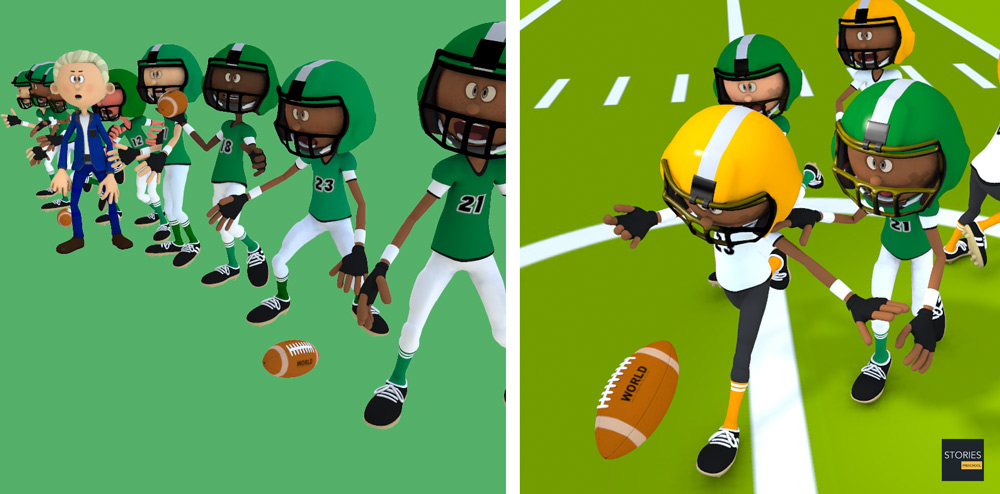
The term "to be sidelined" refers to a player in a sports event who is unable to play (e.g. confined to the sideline) for injury, suspension, or other similar reasons. This term has spread into a business context; a project that has been "sidelined" is no longer a major concern or objective of the proponent company.
Hash Marks
Hash marks are short lines, running perpendicular to sidelines or sideboards, used to mark locations, primarily in sports.

In US football and Canadian football, the hash marks are two rows of lines near the middle of the field that are parallel to the side lines. These small lines (about 1 yard long) are used to mark each of the 5-yard lines, which go from sideline to sideline.
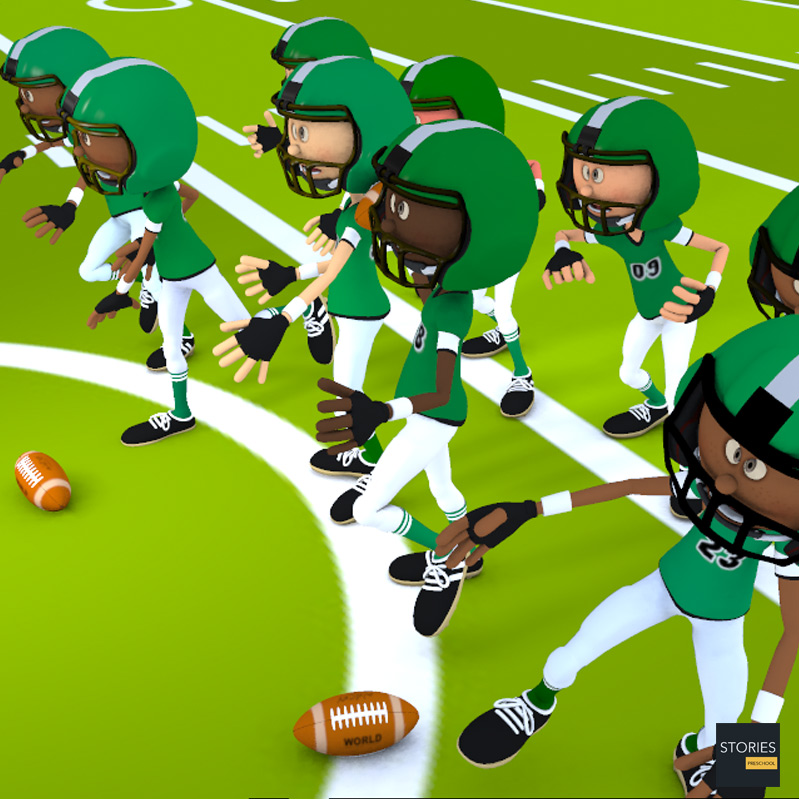
All plays start with the ball on or between the hash marks. That is, if the ball is downed in between a hash mark and the nearest sideline, it must be reset on the hash mark for the next play. The width of a standard football field in the United States is 160 feet (53⅓ yards).
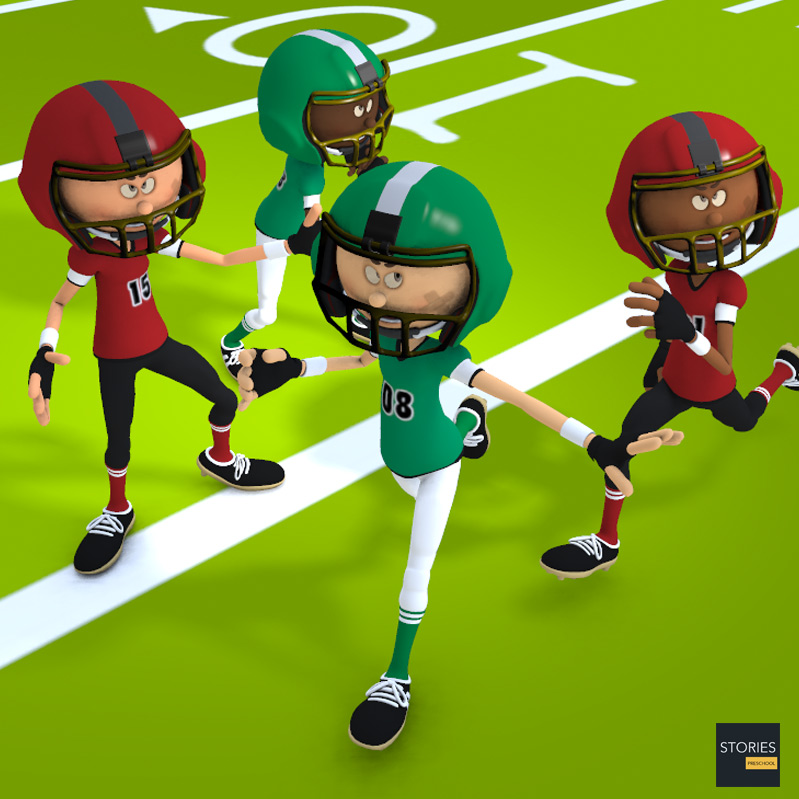
End Zone
The end zone refers to the scoring area on the field, according to gridiron-based codes of football. It is the area between the end line and goal line bounded by the sidelines. There are two end zones, each being on an opposite side of the field. It is bordered on all sides by a white line indicating its beginning and end points, with orange, square pylons placed at each of the four corners as a visual aid. Canadian rule books use the terms goal area and dead line instead of end zone and end line respectively, but the latter terms are the more common in colloquial Canadian English. Unlike sports like association football and ice hockey which require the puck or ball to pass completely over the goal line to count as a score, both Canadian and American football merely need the nose of the ball to break the vertical plane of the outer edge of the goal line.
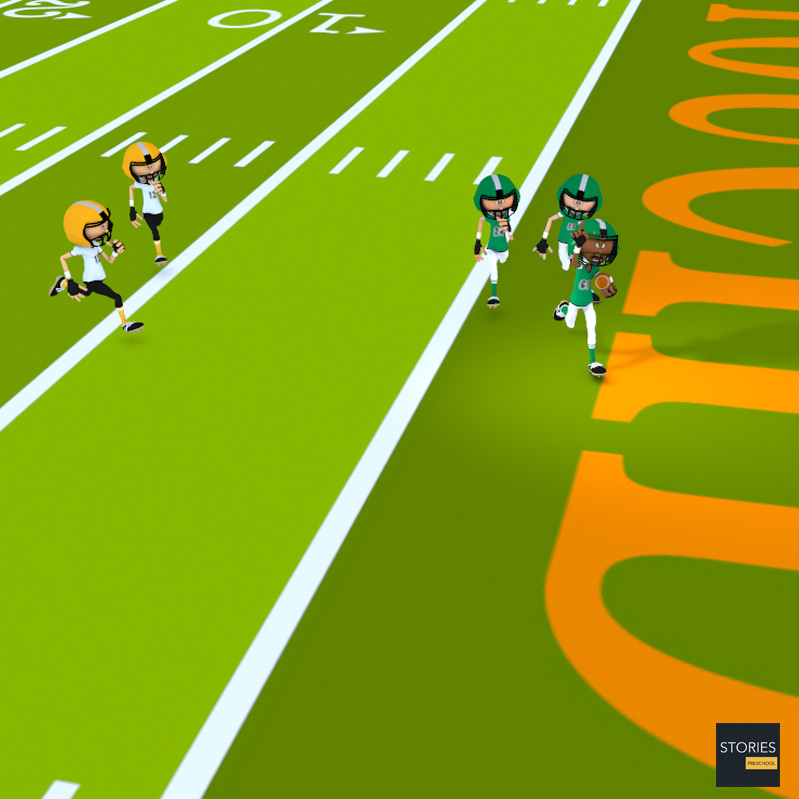
Red Zones
In gridiron football, the red zone is the area of the field between the 20-yard line and the goal line. The red zone has no official meaning during the process of playing the game and is not generally marked on the field (although some professional stadiums may have special striping for the 20-yard line). The term is mostly for statistical, psychological, and commercial advertising purposes (radio networks have been known to sell sponsorship of the red zone whenever the home team enters it). It is said to be a place where the chances of scoring are statistically higher.

Being closer to the end zone, play while in the red zone involves closer cramping of the offense and defense. The short field of play means safeties have a smaller area to worry about defending, wide receivers do not have to run as far, and passes are not thrown as far. Though the distance to the goal line is less than other parts of the field, with all defenders being crammed into a smaller space and having less room to worry about defending, advancing the ball and ultimately scoring may be more difficult. (This is less of a factor in Canadian football, where the end zones are significantly deeper and wider than the American game.)

For all but the weakest amateur kickers, the red zone is universally within field goal range, assuring that points will be scored on a drive unless the team on offense commits a turnover (either an interception or a lost fumble). As a result, ball control is a greater priority in most red zone situations.
Neutral Zone
In gridiron football, the neutral zone is an area in which no member of either team may be, other than the person holding the ball. The neutral zone only exists in dead ball situations (i.e. when play is not ongoing).
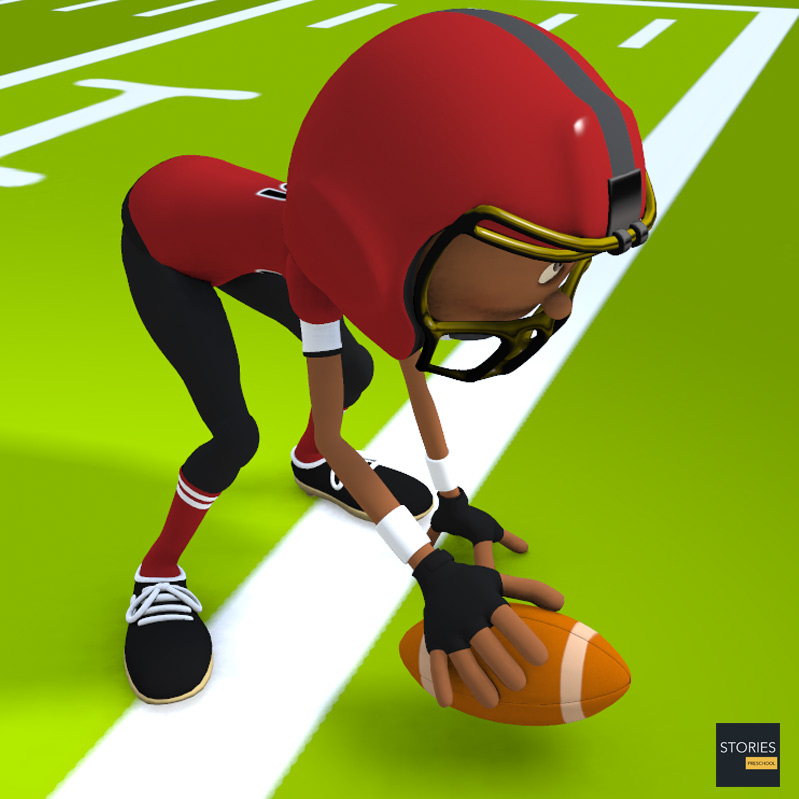
In American football, the neutral zone can be described as the length of the football (11 inches/28 centimeters) from one tip to the other when it is spotted (i.e. placed on a certain spot) on the field prior to the snap of the ball during a scrimmage down. In Canadian football, the neutral zone is a full one yard (3 feet or 36 inches) in front of the tip of the ball during a scrimmage down. The snapper (usually the center) is exempt, as he must place his hand on the ball (thus entering the neutral zone) to execute the snap.

The neutral zone is much longer for kickoffs, safety kicks and fair catch kicks, where ten yards separates the kicking team from the receiving team. The kicker and, if used, a holder are allowed to enter this neutral zone. In addition to not being allowed to enter the neutral zone before the kick, the kicking team may not recover their own kick until the ball has traveled beyond the neutral zone or has been touched by an opposing player.
Knowing whether the ball has passed beyond the neutral zone or remained in or behind the neutral zone is important during forward pass plays and during scrimmage kicks.
- "Behind the neutral zone" refers to the "offensive" side of the neutral zone.
- "In the neutral zone" refers to the actual neutral zone.
- "Beyond the neutral zone" refers to the "defensive" side of the neutral zone.
An additional definition of the neutral zone came into effect after a September 12, 2005, fight between the Philadelphia Eagles' Jeremiah Trotter and the Atlanta Falcons' Kevin Mathis that occurred prior to the opening kickoff. The NFL then instituted a rule that each end of the field from the end zone to the 45-yard line is reserved for one team, and that no player other than a kicker may be between the 45-yard lines prior to the game.
Field Goal Range
Field goal range is the part of the field in American football where there is a good chance that a field goal attempt will be successful. A field goal is normally 17 or 18 yards (7 or 8 yards in Canadian football) longer than the distance of the line of scrimmage to the goal line, as it includes the end zone (10 yards) and 7 or 8 yards to where the holder places the ball. In Canadian football, the goal posts are on the goal lines, in front of the end zones. Therefore, if the line of scrimmage is at the 30, the field goal would be 47 yards (in American football) or 37 yards (in Canadian football).
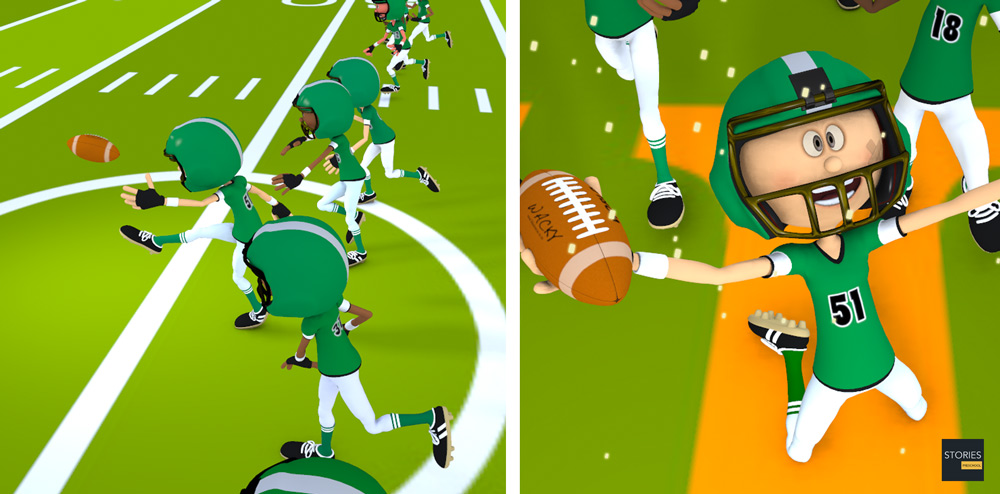
Average Field Goal Range
The exact field goal range varies for each team, depending on the ability of the team's placekicker. While some weaker placekickers may have trouble kicking field goals longer than 40 yards (making field goals from beyond the 23 difficult), others may consistently make 50-yarders, making it practical to kick from beyond the 33. For most NFL kickers, the 35-yard line is typically the limit of their field goal range. Weather conditions, particularly wind, also have a significant impact on field goal range; kicking with the wind at the kicker's back significantly increases field goal range, while kicking against the wind or with a stiff crosswind will greatly reduce the kicker's effective range, while generally there is no advantage beyond assured targeting of a kick if a game is being played indoors.

In high school football, players are permitted to kick off special flat kicking tees up to two inches high. The NCAA banned the use of kicking tees in 1989. Most of the longer-range field goals in NCAA history were kicked prior to the elimination of tees; the use of tees allowed the ball to be elevated out of the field's grass or turf, reducing friction in the opening milliseconds of the kick and allowing for longer kicks.
Kicking Versus Punting
If a kicker is outside of field goal range, teams will generally punt. However, punting too close to the end zone increases the risk of a touchback, which nullifies most of the effect of the punt. Thus, teams who face a fourth down between the 35 and 40 yard lines (closer in a crosswind) often will go for the more risky fourth down conversion rather than risk either the touchback or the missed field goal.

Drop kicks
It has been surmised that a drop kick has a slightly longer range than the standard place kick, but since these kicks are so rare, that is not known for sure. During the early NFL era, this was generally true, and drop kicks were the norm for longer field goals; in fact, the first unofficial NFL record kick of 55 yards, set by Paddy Driscoll in 1924, was indeed set by drop kick.
Flat
The flat in American and Canadian football is the area of the field extending ten yards into the defensive backfield from the line of scrimmage and extending outside the hash marks to the out-of-bounds lines (a distance of about 15 yards).
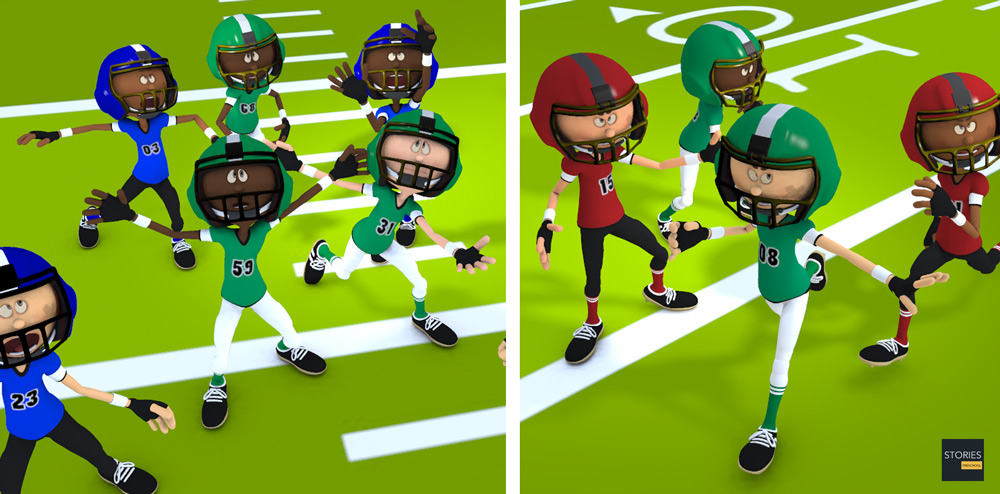
Offenses will typically exploit the flat in order to neutralize a strong attack from the defensive line in the middle of the field or to manipulate a defense's strong pass coverage farther down field. For example, in flat route plays, quarterbacks pass the ball to a player (often a running back) in the flat in hopes that, while the pass has not gone downfield, the receiver (far from the middle of the field and not far downfield enough to worry about cornerbacks and safeties) will have a clear line for an after-the-catch run. If the quarterback hopes to throw farther downfield, the running back in the flat is an outlet receiver. If the receiver is accompanied by blockers, the play is called a screen pass.
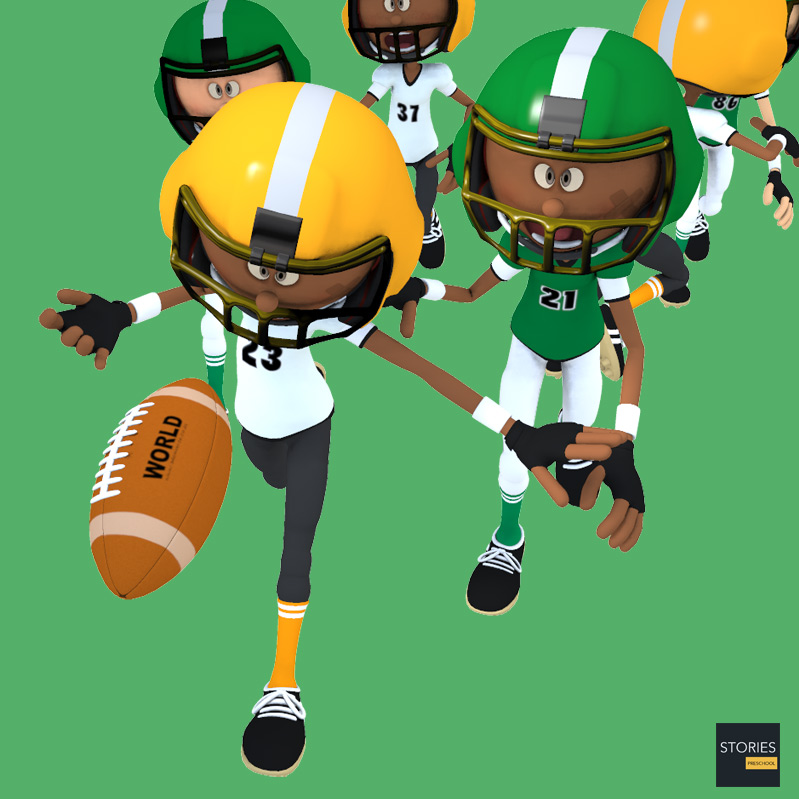
Defenses meanwhile will generally assign a linebacker "flat responsibility" to guard against such passes, but it is difficult to defend against because the offense will usually use the flat route in conjunction with an attack downfield (sometimes as a feint), necessitating a quick linebacker adjustment to make an early tackle against a faster running back after the pass.
The flat, then, denotes one of the many areas of the field over which offensive and defensive coordinators play.
Gap
Gaps in American football are the spaces in between the splits of the offensive linemen. A hole is a space in between the defensive linemen.

Hole
A hole in American football is a space in between the defensive linemen, through which the running back aims to run. It is also known as a running lane. These can be predesignated holes defined by the spacing between players before the snap, or they can be established by moving players around and establishing the holes after the snap (in a play called a run-to-daylight).
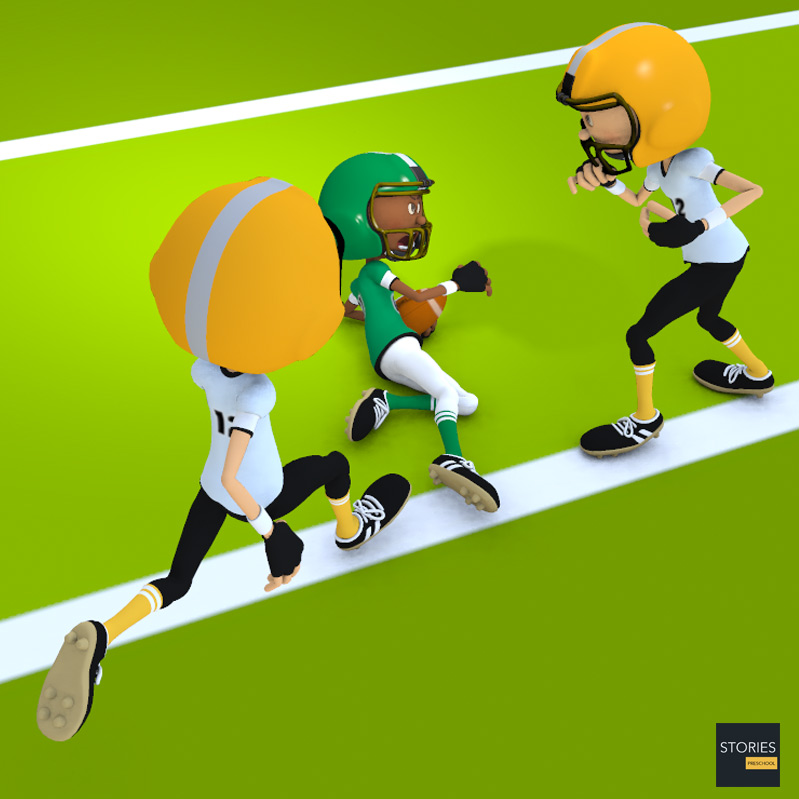
Passing Pocket
The passing pocket is a term used in American football to describe the area in the backfield created on a passing play where the offensive line forms a wall of protection around the quarterback. This allows him adequate time to find an open receiver and to pass the ball. The offensive line will drop back slightly, creating a U-shaped protected area for the quarterback to find an open receiver and get rid of the ball.
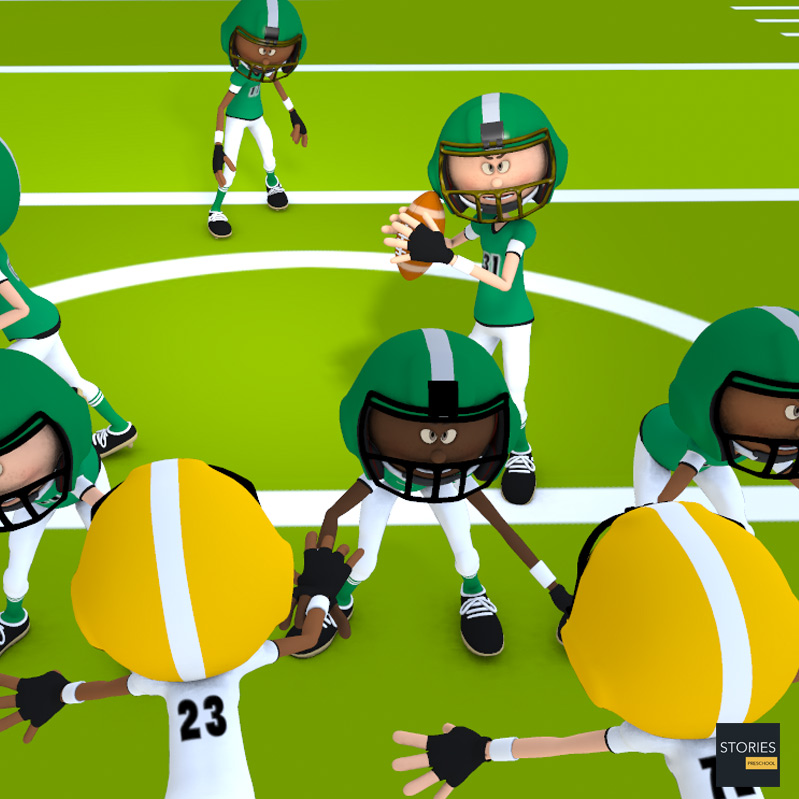
If he is unable to find an open receiver he will attempt to run the ball himself, throw the ball out of bounds to prevent a sack and/or turnover, or if there is no lane, he may collapse to the ground to protect the ball and try to avoid a fumble. Even with a well structured offensive line, the quarterback only has seconds to pass the ball within the tackle box. Moving the pocket can help avoid a sack. When that fails, quarterbacks may scramble, either to gain more time for the wide receivers, to avoid a sack, or to rush the ball.
The term is used as follows: "The quarterback steps up into the pocket."
Tackle Box Structure
The tackle box itself can be formed using different types of protections to keep the quarterback safe. The five man protection is used most often and it only involves the five offensive linemen. The offensive tackles set the depth of the tackle box by kick sliding back to around six yards. The guards are next and they will drop back to around three to four yards and watch for any extra rushers.
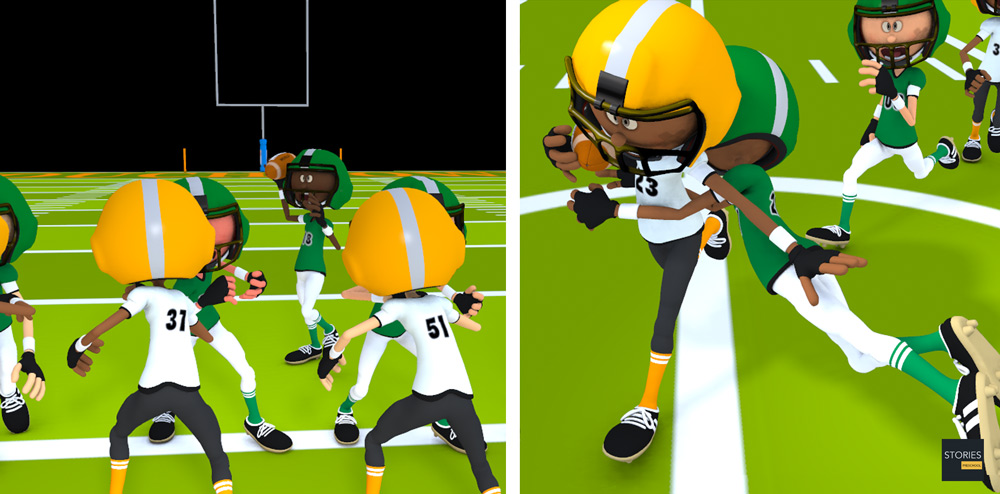
The center will identify the middle linebacker and make sure he does not rush. If the middle linebacker does not blitz then the center will help one of the guards with his man. The different depths of the drops from the linemen helps to create space for the quarterback to step up in the tackle box and get momentum moving towards the receiver he is throwing to. This changes a little bit when six man protection is used because the tight end is now staying in to help protect the quarterback. The tight end will fan out to the tackle's depth and help the defensive end. Sometimes the tackle box is formed by a two tight end set where there is a tight end on both ends of the line.
Tackle Box Protection Packages
The tackle box can be protected by the five linemen, two tight ends, and also the two running backs. There are many different packages that can be used to protect the quarterback. When two running backs are used, they do not set the depth of the tackle box but they do step up and clear out any stray rushers that may get by the guards and center. They are used to create more space for the quarterback to step into in order to make a good throw. There can be one or two running backs used along with one or two tight ends depending on the packages called for. Sometimes, running backs and tight ends will chip a rusher, which is to quickly block them, and then they will go run their receiving route. Tight ends can do the same thing, which means that the tackles would then have to set the depth of the tackle box.
Defensive Maneuvers
The defense is trying to break down the tackle box as quickly as possible. They will try to send extra rushers to outnumber the blockers. Another tactic would be to send speed rushers off the edge to run around the tackles before they can set the depth of the tackle box. The defensive ends are sometimes able to run past the tackles and get to the quarterback before he can step up into the tackle box to protect himself better. Another maneuver that is used is the middle blitz where the defense sends multiple rushers up the middle of the line in order to get past the center and guards to collapse the tackle box and sack the quarterback. The offensive line cannot block up the middle when too many rushers are running at them. This rushes the quarterback and forces him to get rid of the ball before he is ready to do so. There are many different types of blitzes but their only purpose is to confuse the blockers and ruin the tackle box that is being formed.
When the Tackle Box Collapses
When the defense succeeds in their goal of confusing the offensive linemen, major problems form for the quarterback. The term that is used when the defense is getting close to the quarterback is that the tackle box is collapsing. When the tackle box collapses, the quarterback is trained to do one of a few different things: to scramble out of the tackle box and look to gain yards by running, to get outside of the tackle box and throw the ball out of bounds, or—in extreme situations—to just take the sack and not lose possession of the football.

This is a very tough time for the quarterback because the game is played very quickly and he may struggle to make the correct decision when his linemen do not block well on one play. A quarterback who is able to effectively react to the pocket collapsing and salvage the play is said to have good pocket awareness or pocket presence.
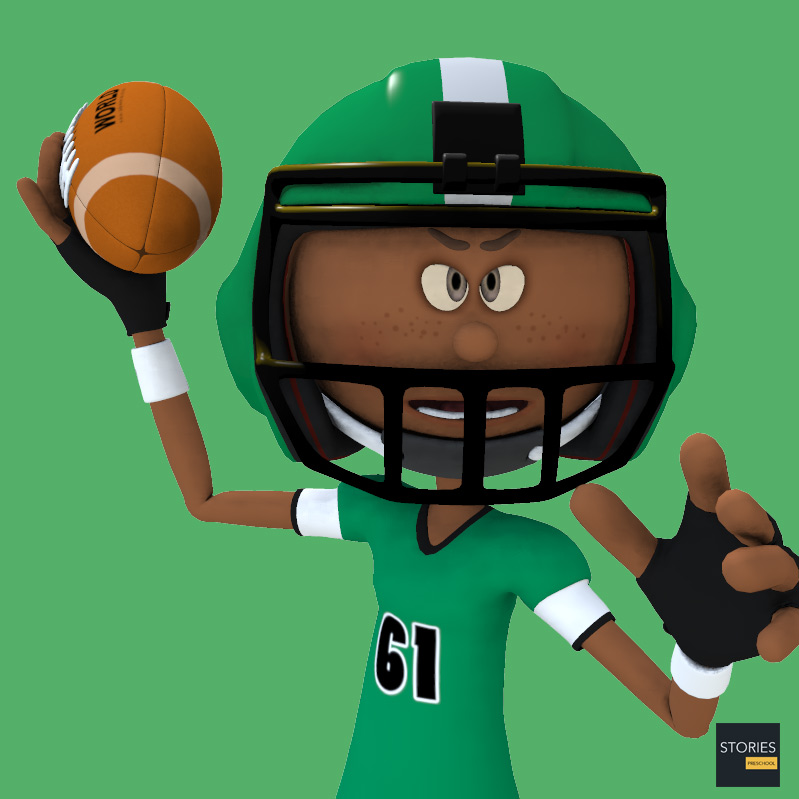
SPORTS

RESOURCES
This article uses material from the Wikipedia articles "American football" and "American football rules", which is released under the Creative Commons Attribution-Share-Alike License 3.0.
© Stories Preschool. All Rights Reserved.
